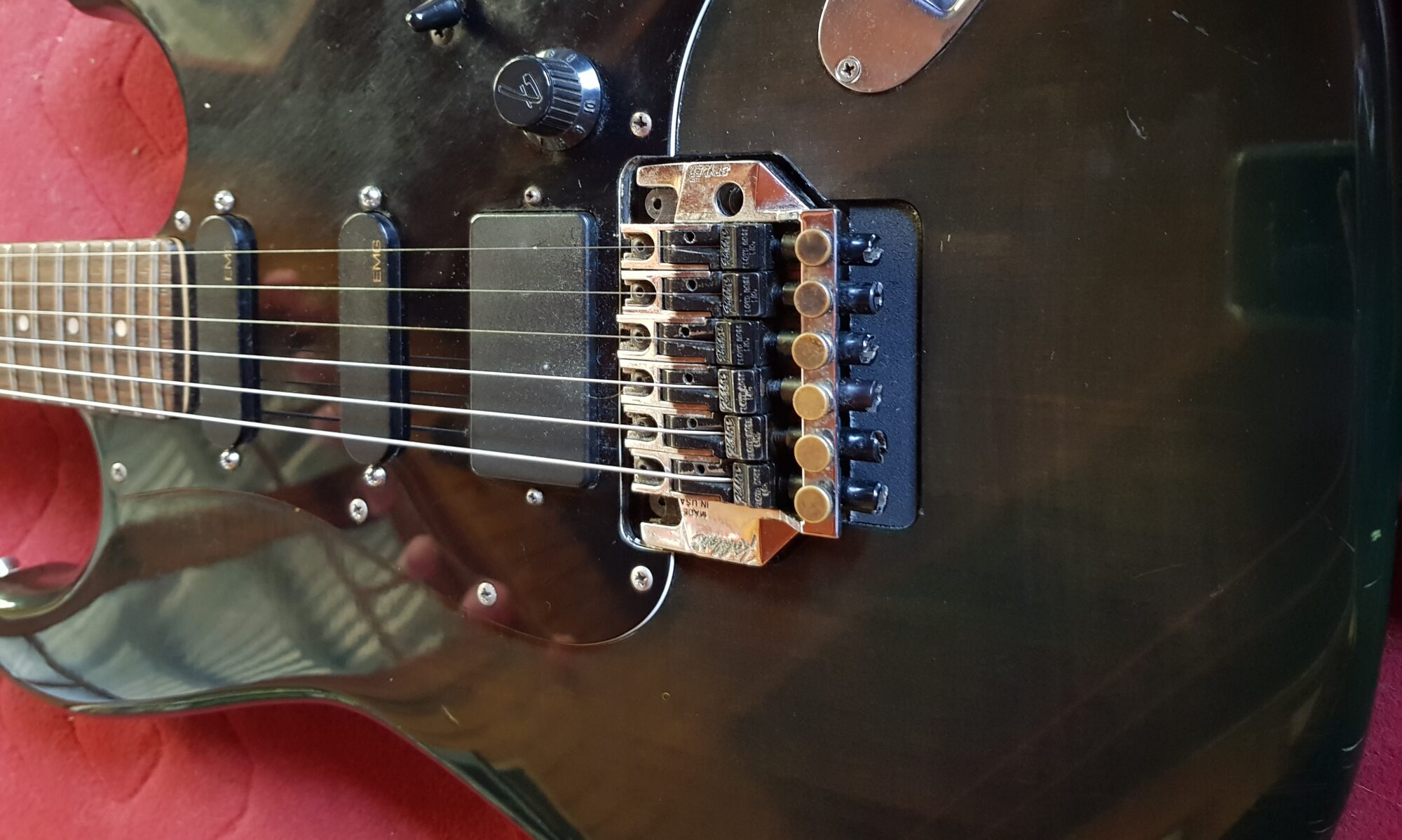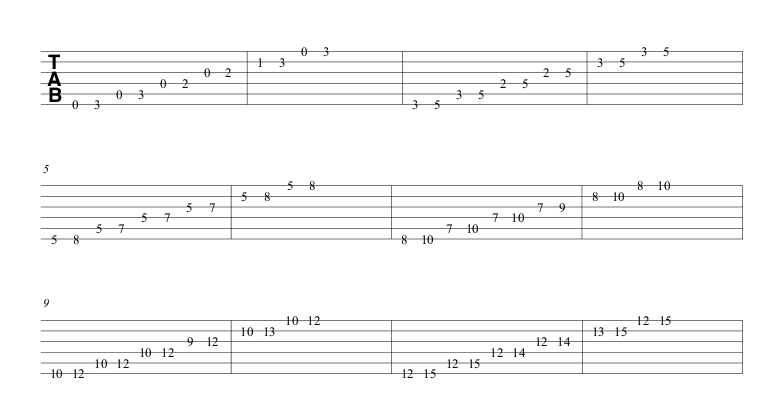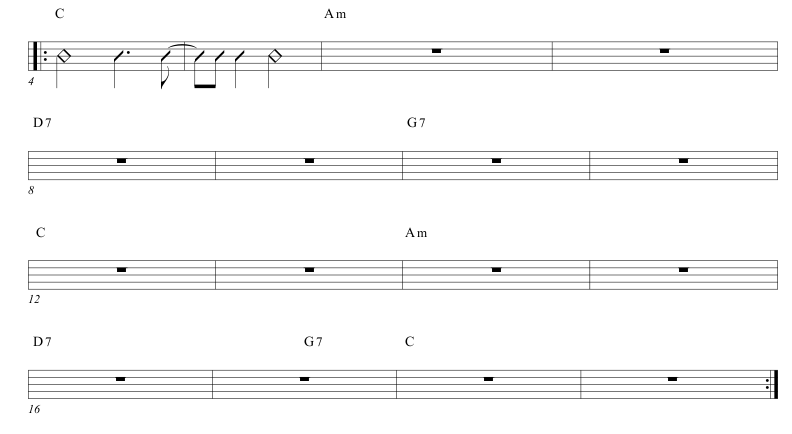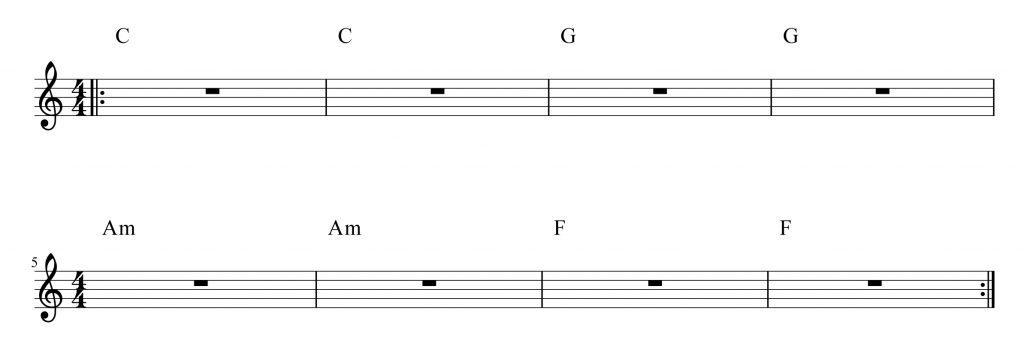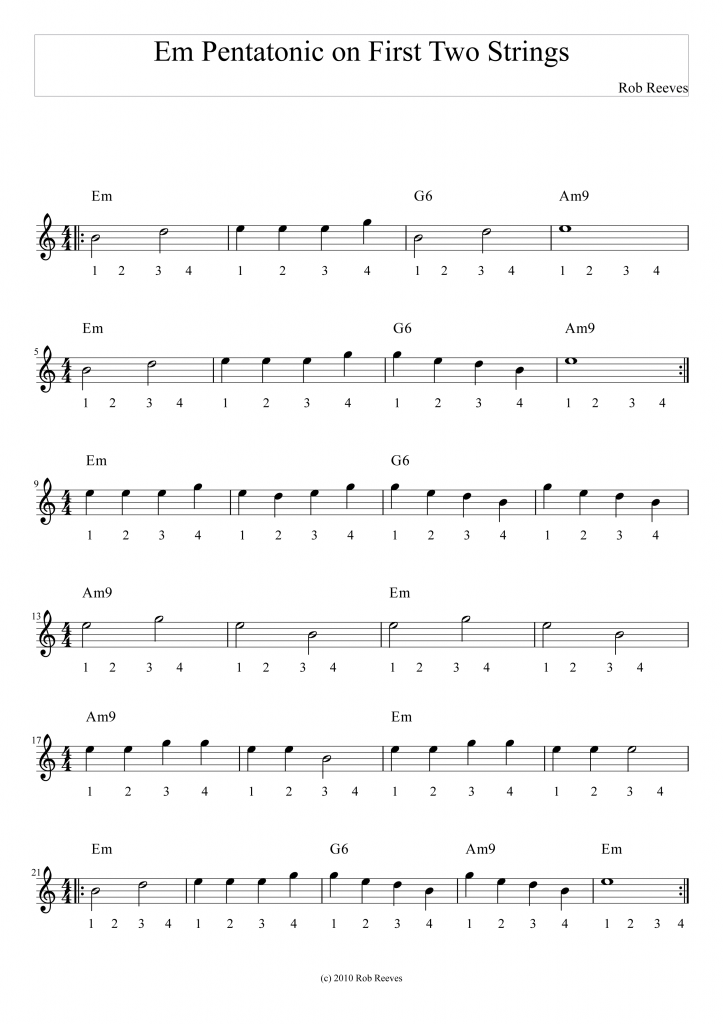Here is a practice track for those wanting to polish up their soloing over a funk style A minor groove. The place to start with soloing over this groove, which alternates between Am7 and D9 is the A minor pentatonic scale. There are six fingerings of the A minor pentatonic scale which cover the entire fretboard. Practice in each of the fingerings until you know them all well, then practice going between pairs of fingerings, until you can play anywhere on the neck of the guitar!
Here are the six fingering patterns – notice that the first is identical to the sixth after making adjustment for the open strings.
The minor pentatonic approach is however just the beginning of what you can do. You can also try A natural and Dorian minor scales. Since Am and D7 are the ii and V chords of the G major scale, you can also use the G major scale. Try working off the A minor seventh and D7 or D9 arpeggios. You might also like to experiment with the B minor pentatonic scale and the E minor pentatonic scale, as both of these scales contain only notes from the G major scale. As always, let your ear be the judge!
Here is the practice track:
Practice track Am7-D9 funk groove
Enjoy!
